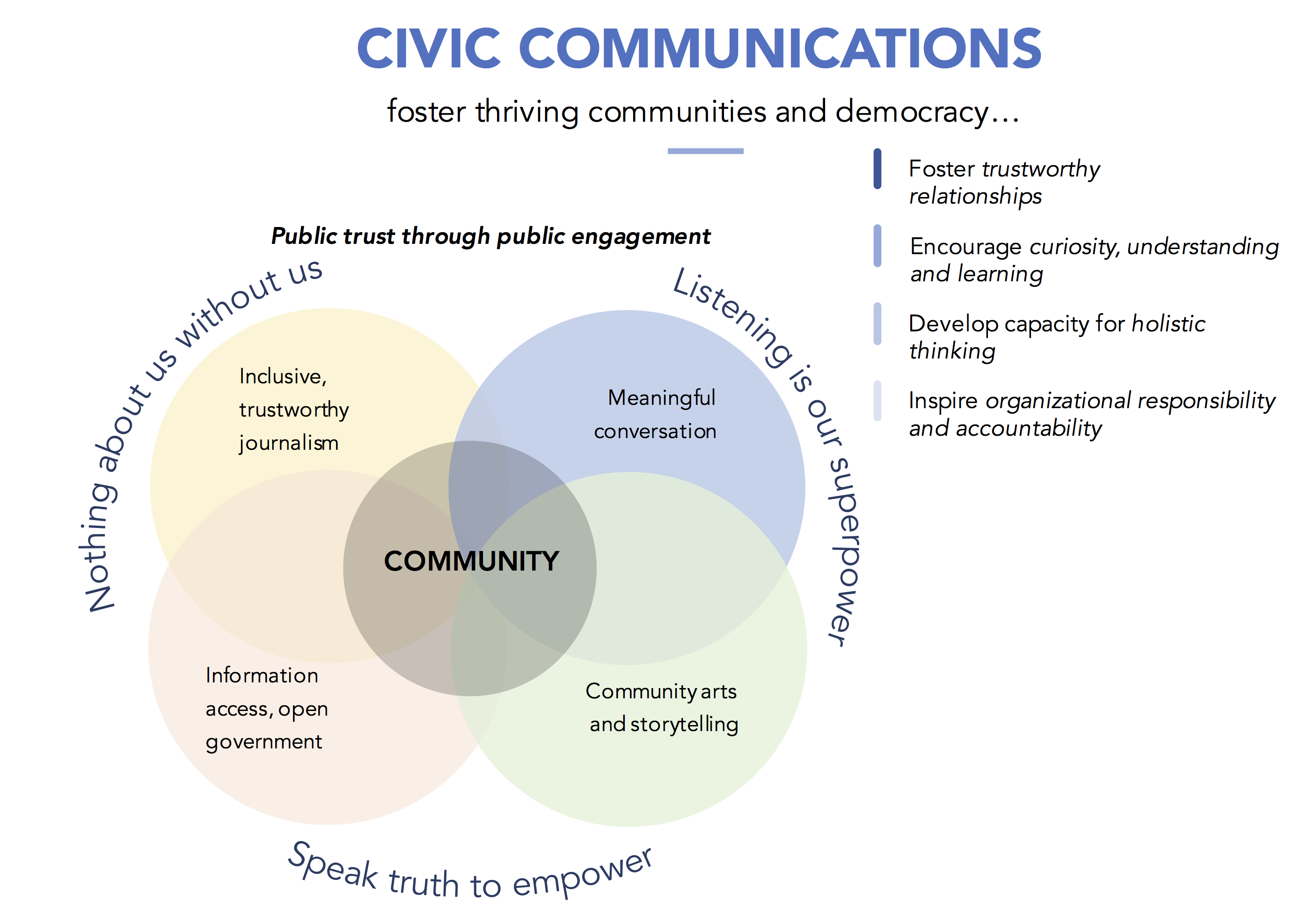I’ve spent this past year focused on a project of Journalism That Matters (JTM), a nonprofit I co-founded that hosts conversations to foster collaboration, innovation, and action so that a diverse news and information ecosystem can thrive.
My interest grows from a discovery I made a few years ago when looking for grant money for a project. I discovered that less than 10% of foundation funding for new journalism ventures was going to meet the needs of underserved communities. In other words, new media was even more white than traditional media! Seemed like a wakeup call was in order.
JTM partnered with the American Society of News Editors, working with three news organizations who are engaging their communities around issues related to diversity and inclusion. Their stories and more are at the Engagement Hub, a site we aspire to become a gathering place for those who see engagement as a means for making diverse voices more visible.
Our partners:
They’ve taken an approach to reporting that begins by listening to their community. For example, to look at affordable housing, they brought together government, nonprofit and people “in the system.” In the process, they not only found stories to tell but made connections to move the dial on this challenging issue.
Starting with a “listening tour” they have sparked conversations and working groups to address entrenched challenges around employment, education, criminal justice, and housing. In the process, they are building community coalitions and optimism.
By training community members in East Oakland to tell untold stories of where their neighborhoods, they are changing the relationship between the news organization and the community. The project is growing, working in Jackson, Mississippi and Sacramento, California.











